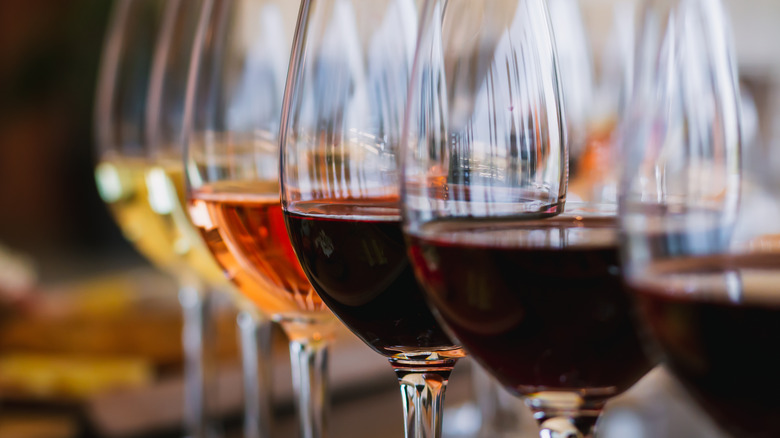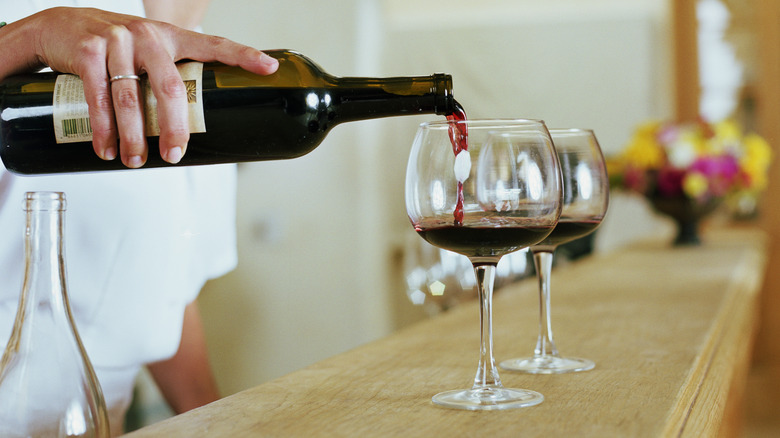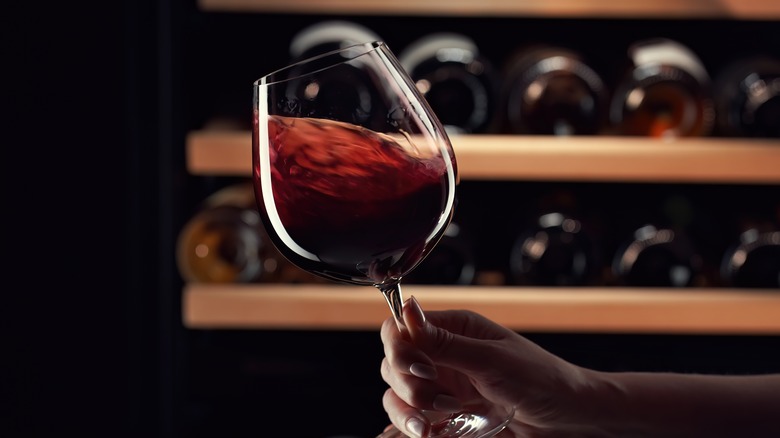What's The Difference Between A 'Horizontal' And 'Vertical' Wine Tasting?
Organizing a wine tasting is an art unto itself, a form of storytelling through taste and smell. By posing a particular wine against another, there is a great potential to bring minute differences to the forefront — even among wines that have a lot in common.
Many wine tastings at vineyards or wine bars will seek to demonstrate a broad range of flavors and styles of wine, showing off a winemaker's versatility through a range of grapes and vintages. You might have a rosé, a Sauvignon Blanc, and a Pinot Noir in the same sitting, perhaps all from different years.
But more educational wine tastings often follow one of two styles: A horizontal tasting or a vertical tasting. In a horizontal wine tasting, wines of the same grape or vintage are selected from different wineries or regions. In a vertical tasting, different vintages from the same winemaker are presented alongside one another.
Horizontal wine tastings
Horizontal wine tastings are designed to showcase how variations in weather and climate each year (within a one or two year buffer) manifest differently across various estates. Two 2017 Merlots from vineyards in Sonoma, California, for example, would have been exposed to the same conditions, so the final expression of the wine relies on the expertise of the winemaker and their ability to quality control.
A horizontal wine tasting could also refer to a tasting that showcases wines of the same grape and vintage from vastly different regions, in order to show the role that terroir plays in winemaking. Instead of comparing two wines with comparable climate conditions, you would compare, say, a 2020 Cabernet Sauvignon from Chile against a 2020 Cabernet Sauvignon from Italy, or even a 2019 or 2021 Cabernet Sauvignon from Bordeaux. The variations across countries and regions are a great reminder of the versatility of grapes, and how different climates can bring out wildly different flavor profiles from the same varietal.
Vertical wine tastings
Vertical wine tastings are even more specific than horizontal wine tastings. Vertical wine tastings take the same wine from the same vineyard across several years, in order to show how the circumstances of different years and the winemaker's evolving style impact the final product.
This can also be an effective tool for determining how a wine has aged, if it should be released for sale, or if it could benefit from more time in the cellar. Even identical wines can develop completely differently depending on how long they are stored after bottling. Vertical wine tastings are often done in-house to gauge a wine's progression, and they allow winemakers to decide if they want to make changes to their process in future years based on a preferred vintage.
Vertical wine tastings have historically tended to be more popular than horizontal wine tastings — though some critics have questioned whether pitting the same wines of different vintages against one another results in more competition than appreciation.
Whichever method one prefers, both make training one's palate easier by learning to differentiate between the subtle notes of each blend.



